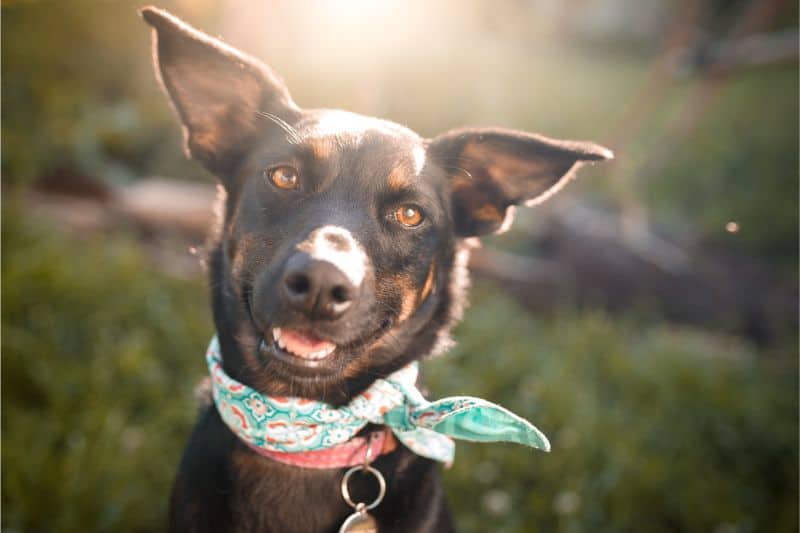Cracking the Code: How to Read Your Dog’s Body Language

Do you ever wonder what your pup’s thinking when they perk up their ears, or suddenly wag and stick up their tail when a new dog comes along? I think most dog owners agree that their pets are very expressive, but what they are thinking is still a mystery to most.
The team at Animal Medical Hospital & 24-Hour Urgent Care explored the body language of our canine friends, so that you can better understand their cues.
What Is Your Dog’s Body Language Saying
Understanding your pet’s body language helps when you are taking them out into the wide world. The outside is full of situations in which you can better know your pet and their response to stimuli, whether that’s an approaching stranger, the sound of a bird, or a friendly dog who wants to play.
Here are some basic examples of typical body language and what they mean.
Happy and Contented Body Language
Most of us can identify a contented, relaxed pup. Some pet owners even swear by the fact that their dogs smile. Relaxed body language means your pet is comfortable and socialized, and is open to what’s happening around them, and even inquisitive.
Some examples of relaxed body language include:
- Loose wagging
- Open mouth, smiling
- Squinty eyes, half-closed
- Body wiggles
- Leaning in toward person or others
- Ready to investigate in a relaxed way
This is the body language that reflects a confident, happy dog, and often one that has been well trained and socialized. Most of the time, a well mannered dog behaves in this fashion and is eager to embrace new situations with their owner at their sides.
Anxious, Reluctant, or Shy
Not all days are good days with dogs, and sometimes a pet becomes anxious or shy in certain situations. It might be that they’re afraid of thunderstorms or a knock at the door. Here are some physical cues when your pet is fearful or anxious. If your dog is displaying fear around another person or pet, it is best to remove them from the situation to avoid any conflict. Disesculate your pet’s anxiety by using distractions, separation, and focused attention on something they find soothing.
Examples of anxious body language include:
- Lowing tail
- Big, dilated pupils
- Rolling over
- Shaking
- Looking at you and then the object of fear
- Attempting to escape
- Cowering
If your pet is feeling anxious, treats and other rewards are a good tool to distract them. Depending on the source of their stress, offering some attention, snuggles, and time spent playing something challenging can give them reassurance. Keep your own demeanor relaxed and positive, since pets pick up on our emotions.
Possible Aggression
When a dog is in fear and it continues to escalate, they may become distressed and possibly aggressive. Never put your pet in a situation that causes additional stress and make sure to remove them from strangers, children, or other animals until the situation resides.
Warning signs of possible problems:
- Stiff tail and upright ears
- Hair raised
- Eyes dilated
- Staring
- Stiff posture
- Raised, curled lips
- Wagging
- Growling
- Barking
If these behaviors continue, intervention is needed with your veterinarian, trainer, or veterinary behaviorist since aggression and fear can put your pet, other animals, and other people in danger.
We hope this overview helps you decode some of the physical signs of your pet’s demeanor. Obviously, the goal is to train and socialize your pet so that they display the confident, relaxed, and happy signals. We are here to answer any questions about your pet’s body language, or any other animal related concerns or questions. Please feel free to call us.
